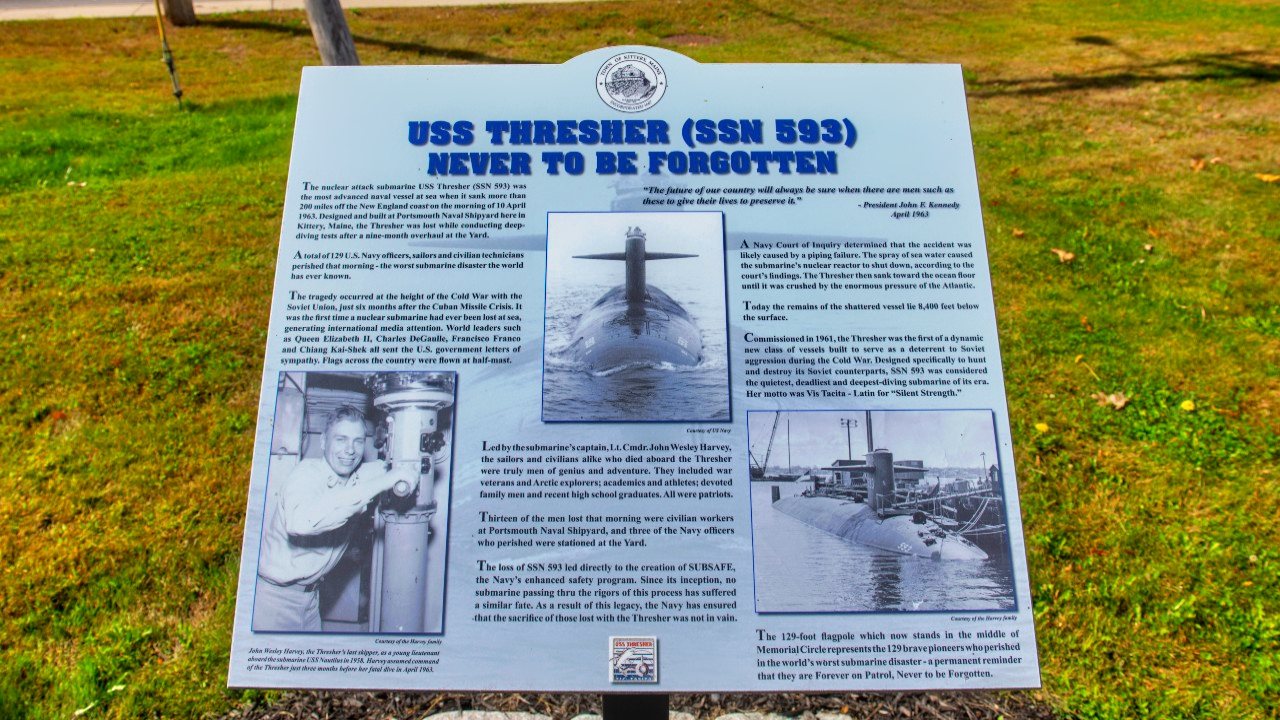‘Shattered Into 5 Pieces’: How A U.S. Navy Submarine Was Lost Forever
Submarines were among the most dangerous military occupations during World War II, with the U.S. Navy losing 52 submarines and 3,500 submariners—a 20% casualty rate. Although technology has improved, making such losses rare today, submarines remain inherently risky.
What You Need to Know: Submarines were among the most dangerous military occupations during World War II, with the U.S. Navy losing 52 submarines and 3,500 submariners—a 20% casualty rate. Although technology has improved, making such losses rare today, submarines remain inherently risky.
-The tragic sinking of the USS Thresher in 1963 underscores this danger. The Thresher, an advanced nuclear-powered submarine, was conducting deep-dive trials off the coast of Massachusetts when it mysteriously sank, killing all 129 crew members.
-Despite extensive investigations, the exact cause remains unknown, with theories ranging from a failure in a silver-brazed salt-water piping joint to an electrical malfunction affecting the main coolant pumps.
The Mysterious Sinking of the USS Thresher Submarine
During World War II, the U.S. Navy lost 52 submarines and 3,500 submariners – making service on a submarine the most dangerous occupation in the U.S. military during the world’s greatest ever conflict. In the U.S. Navy, submariners had a shocking 20 percent casualty rate.
The German U-boat casualty rate was even higher at 75 percent. Point being submarines were uniquely dangerous.
But a lot has changed since World War II. Submarines aren’t used as rampantly as they were in the middle of the century. And submarine technology has improved markedly.
The result is that it has become basically unheard of for the U.S. Navy to lose a submarine. But that ‘safety transition’ took decades.
One incident in the 1960s demonstrated that submarines were, and still are, potentially quite dangerous.
The USS Thresher Accident
When the Thresher launched from the Portsmouth Naval Shipyard in 1961, she was technically advanced, the first of a new class of nuclear-powered submarines that combined features of an “attack” submarine and a “hunter-killer” submarine.
“[The Thresher] had a cigar-shaped hull that was derived from the research submarine Albacore (AGSS-569) for efficient underwater performance,” The U.S. Naval Institute wrote.
“In her bow was the massive BQQ-2 sonar, heralded as the most advanced sonar ever fitted to a submarine, being credited with unprecedented passive detection ranges.”
The Thresher featured four torpedo tubes, all capable of firing antiship torpedoes, antisubmarine torpedoes, and the ASROC antisubmarine rocket.
The ASROC antisubmarine rocket featured a combination of or rocket and torpedo technology.
The ASROC was “launched like a conventional torpedo, it would streak to the surface, leave the water on a ballistic trajectory, and plunge back into the water several miles from the Thresher, where the SUBROC’s nuclear warhead would detonate,” The U.S. Naval Institute wrote.
Perhaps most impressively, the Thresher featured a S5W reactor plant that allowed for unlimited range.
What Happened to the Navy Submarine Thresher?
Sixty years plus later, the ultimate fate of the Thresher is still a mystery. On April 9th, 1963, the Thresher left Portsmouth with 129 people, after a six-month overhaul, and rendezvoused with the Skylark about 190 nautical miles east of Cape Code, Massachusetts.
The Thresher began to perform a series of dive trials.
After completing an initial trim-dive, the Thresher surfaced and then performed a second dive.
The second dive was intended to reach just half of the Thresher’s dive depth of 1,300 feet (the Thresher had already been to her 1,300 dive limit about 40 times). The Skylark received garbled communications from the Thresher describing “… minor difficulties … have positive up-angle … attempting to blow …”
The Thresher never surfaced.

Finding the Thresher took over two months. On June 25th, the Mizar finally found the Thresher, it’s hull shattered into five pieces, resting on the sea floor at a depth of 8,400 feet.
What happened? Deep-sea photography of the Thresher’s final resting place suggested that a salt-water piping system joint that relied on silver brazing (instead of welding) may have failed. But that is not confirmed.
An alternative theory asserts that the Thresher sank because of an electrical failure to the bus that powered the main coolant pumps.
About the Author: Harrison Kass
Harrison Kass is the Senior Editor with over 1,000 articles published. An attorney, pilot, guitarist, and minor pro hockey player, Harrison joined the US Air Force as a Pilot Trainee but was medically discharged. Harrison holds a BA from Lake Forest College, a JD from the University of Oregon, and an MA from New York University. Harrison listens to Dokken.
All images are Creative Commons U.S. Navy Submarines.


